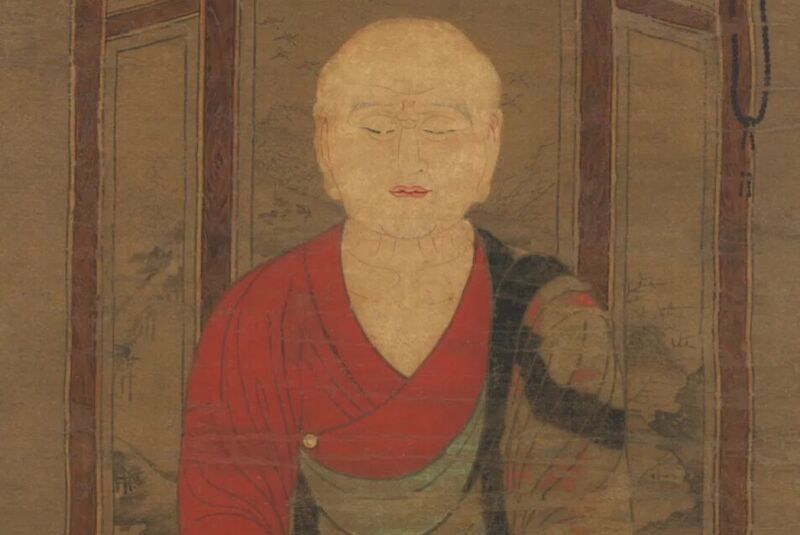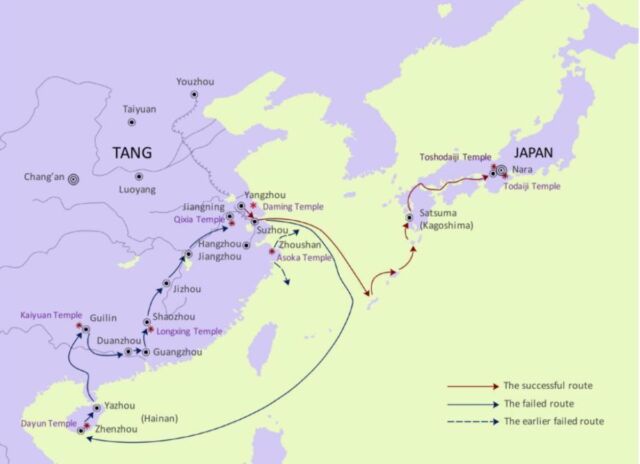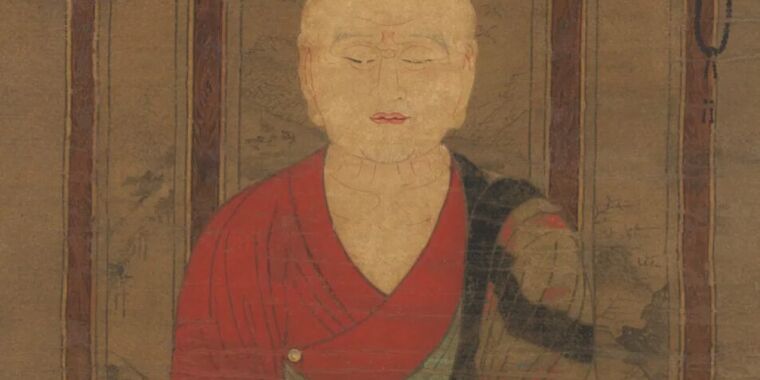
Heritage Images/Getty Images
The practice of herbal medicine in Japan is known as Kampo, and such treatments are often prescribed alongside Western medicines (and are covered by the national health care system). The first person to teach traditional Chinese medicine in Japan was an 8th-century Buddhist monk named Jianzhen (Ganjin in Japanese), who collected some 1200 recipes in a book: The secret recipe of Jianshangren (Holy Priest Jianzhen).. The text was considered lost for centuries, but the authors of a recent article published in Compounds magazine came across a book published in 2009 that contains most of Jianzhen’s original recipes.
“For the book Jianshangren’s secret recipe was found, everyone in the world thought it had disappeared,” wrote Shihui Liu and his co-authors at Okayama University in Japan. “Fortunately, we found it before it disappeared completely. It is not yet included in the intangible cultural heritage. As we all know, intangible cultural heritage itself is very fragile. Everything has a process of generation, growth, continuation and extinction, and the remains of intangible cultural heritage are also in such a dynamic process. We hope to attract more people’s attention to protect many intangible cultures that are about to disappear, including Jianshangren’s secret recipe.”
Born in what is now Yangzhou, China, Jianzhen became a disciple of Dayun Temple at the age of 14 and eventually became abbot of Daming Temple. He was also known for his medical expertise – passed down from monks to disciples for generations – and he even opened a hospital in the temple. In the fall of 742, a Japanese emissary invited Jianzhen to lecture in Japan, and the monk agreed (although some of his disciples were dissatisfied). But the crossing failed. Nor did his next three attempts to travel to Japan.

S. Liu et al., 2022
On Jianzhen’s fifth attempt to go to Japan in 748, he made some more progress, but the ship was blown off course by a storm and he ended up on Hainan Island. The monk made the arduous journey overland back to his temple, lecturing at monasteries along the way. It took almost three years for him to come back, by which time he was blinded by an infection. However, the sixth attempt proved successful. After a six-month journey, Jianzhen reached Kyushu in December 748 and reached Nara the following spring, where the monk received a warm welcome from the emperor.
According to the authors, Jianzhen brought many traditional ingredients to Japan, including musk, agarwood, snail, rosin, dipterocarp, fragrant bile, sucrose, benzoin, frankincense, and Dutchman’s pipe root, as well as honey and sugar cane. which formed the basis for some 36 different medicines. He also managed to collect other ingredients during his journey from China to Japan.
After settling in Toshodaiji Temple, the monk began growing medicinal herbs in a garden and distributing his medicines to those in need, including Emperor Shomu and Empress Komyo. Despite being blind, Jianzhen was still able to rely on smell, taste and touch to identify the various drugs. And he also taught many Japanese people how to collect and make those medicines. In fact, many Japanese medicines were once wrapped in paper decorated with a portrait of Jianzhen.

